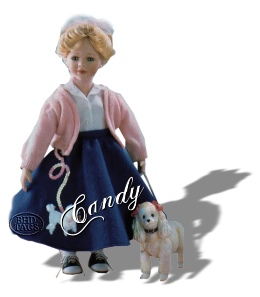

Gone With The Wind (1939) is often considered the most beloved, enduring and popular film of all time. Sidney Howard's script was derived from Margaret Mitchell's first and only published, best-selling Civil War and Reconstruction Period novel of over 1,000 pages that first appeared in 1936. Producer David O. Selznick had acquired the film rights to Mitchell's novel for $50,000 - a record amount at the time, causing some to label the film "Selznick's Folly." At the time of the film's release, the fictional book had surpassed 1.5 million copies sold. More records were set when the film was first aired on television in two parts in late 1976, and controversy arose when it was restored and released theatrically in 1998.
The famous film, shot in three-strip Technicolor, is cinema's greatest, star-studded, historical epic film of the Old South during wartime that boasts an immortal cast in a timeless, classic tale of a love-hate romance. The indomitable heroine, Scarlett O'Hara, struggles to find love during the Civil War years and afterwards, and ultimately seeks refuge for herself and her family at the beloved plantation Tara. Authenticity is enhanced by the costuming, sets, and variations on Stephen Foster songs and other excerpts from Civil War martial airs. Its opening, only a few months after WWII began in Europe, helped American audiences to identify with the war story and its theme of survival.
With three years advance publicity and Hollywood myth-making, three and one-half hours running time (with one intermission), a gala premiere in Atlanta on December 15, 1939, highest-grossing film status, and Max Steiner's sweeping musical score, the exquisitely photographed Technicolor film was a blockbuster in its own time. An investment of about $4 million in production costs was required - an enormous, record-breaking sum. The film was challenging in its making, due to its controversial subject matter (including rape, drunkenness, moral dissipation and adultery) and its epic qualities.
A nationwide casting search for an actress to play the Southern belle Scarlett resulted in the hiring of young British actress Vivien Leigh, although many other famous actresses had been tested including: Katharine Hepburn, Miriam Hopkins, Margaret Sullavan, Barbara Stanwyck, Joan Crawford, Lana Turner, Mae West, Tallulah Bankhead, Jean Arthur, and Lucille Ball. Although MGM star Clark Gable was expected to play the role of the dashing war profiteer Rhett Butler, Errol Flynn, Ronald Colman, and Gary Cooper were also considered for the part.
The landmark film received tremendous accolades, more than any previous films to date: thirteen nominations and eight Academy Awards, including Best Picture, Best Director (Victor Fleming - the only credited director), Best Actress (Vivien Leigh), a posthumous Best Screenplay (Sidney Howard, along with collaborative assistance from Edwin Justin Mayer, John Van Druten, Ben Hecht, F. Scott Fitzgerald, and Jo Swerling) - the first post-humous winner of its kind, Best Color Cinematography, Best Interior Decoration, Best Film Editing, and Best Supporting Actress (Hattie McDaniel - the first time an African-American had been nominated and honored) and two honorary plaques, one for production designer William Cameron Menzies for the "use of color for the enhancement of dramatic mood," and the other a technical production award for Don Musgrave for "pioneering in the use of coordinated equipment."
Many of the five nominations that lost were unexpected: Best Actor (Clark Gable who lost to Robert Donat for Goodbye, Mr. Chips), Best Supporting Actress (Olivia de Havilland who was competing against co-star Hattie McDaniel), Best Sound Recording, Best Original Score (Max Steiner), and Best Special Effects. Its record of ten Academy Awards wins held firm until 1959, when Ben-Hur (1959) won eleven Oscars. It was phenomenal that Gone With the Wind did so well, given that 1939 boasted some of the greatest American films ever made, including Ninotchka, The Wizard of Oz, Wuthering Heights, Mr. Smith Goes to Washington, Goodbye, Mr. Chips, and Stagecoach.
Although almost half of the film was directed by Victor Fleming (45%) - who received screen credit, four other directors contributed various parts of the film: Sam Wood (15%), William Cameron Menzies (15%), George Cukor (5%) - the first director, Reeves Eason (2%), and the remaining from various second unit directors (18%).
In the opening credits, producer David Selznick's name appears: "Selznick International In Association with Metro-Goldwyn Mayer has the Honor to Present its Technicolor production of Margaret Mitchell's Story of the Old South." The title of the film "GONE WITH THE WIND" is displayed in gigantic, majestic words, each one individually sweeping across the screen from right to left above a red-hued sunset. As the titles and credits play, carefully-selected images of the Old South are portrayed as backgrounds - a green pasture with horses grazing, a river at night, magnolias, a mill constructed from bricks, slaves working in the fields, peaceful Southern plantations, the city of Atlanta, and a sunset.
The film extends over a time period of twelve years in the life of plantation belle Scarlett O'Hara, from the start of the Civil War through the Reconstruction Period, and covers her various romantic pursuits against the backdrop of historical events.
The fanciful, introductory foreword to the film explains:
Until next time when we go Strolling Down Memory Lane.
Maybe I'll catch you out "Strolling"
